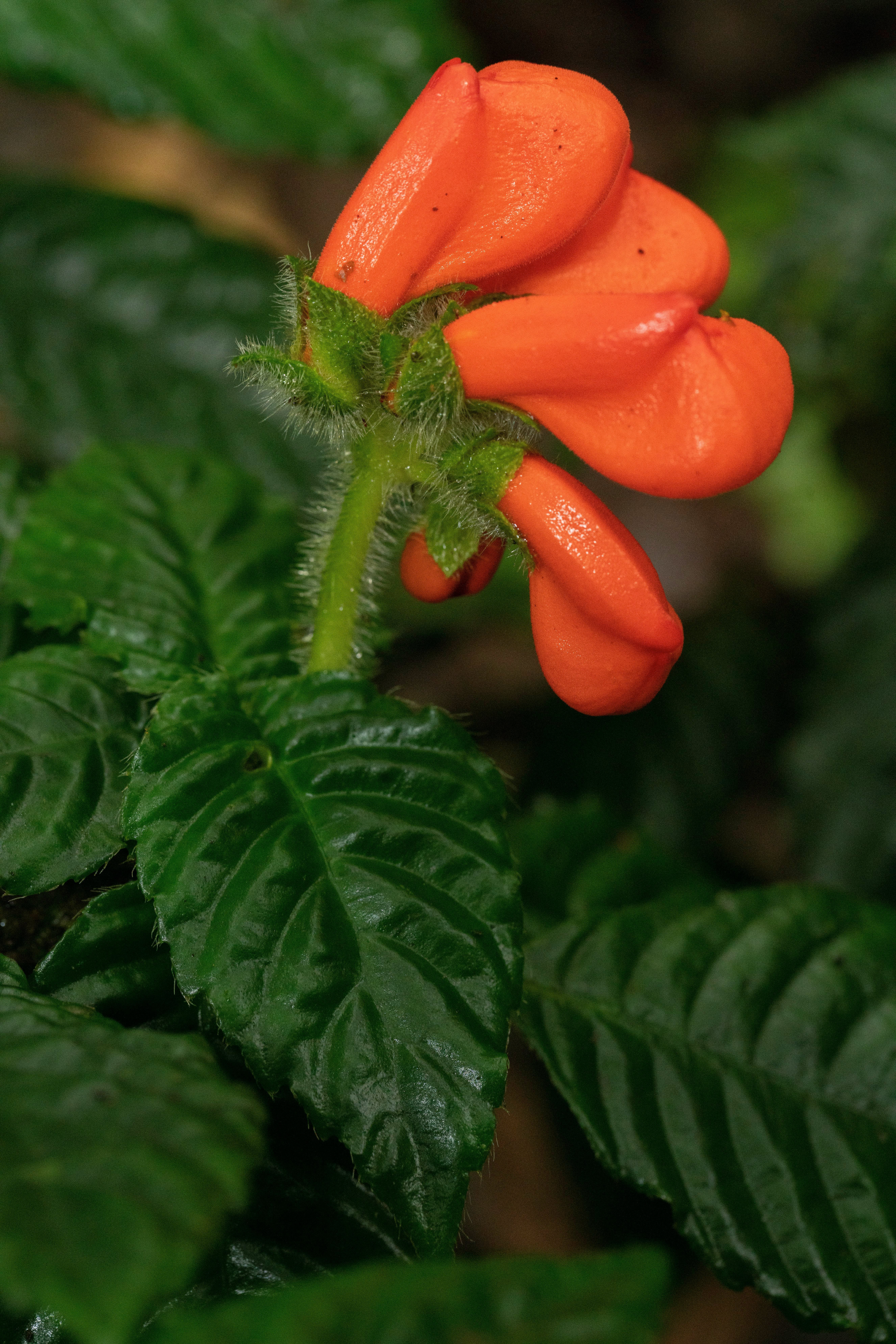
For decades, the Centinela rainforest in Ecuador was the subject of tropical botanists’ dreams. The problem was it didn’t exist anymore.
The slice of forest was said to be among the most biodiverse eight square miles recorded in the world, containing 90 species of plants that couldn't be found anywhere else. But, according to the scientists who had intensely studied the rainforest and presented their findings three decades ago, Centinela and all its biological treasures had been cleared and replaced with plantations, along with more than 90 per cent of western Ecuador's rainforests.
The tragedy even got its own name. A “centinelan extinction” came to describe the sudden annihilation of a species before it could be known or understood. One plant, spotted in the Centinela rainforest before it had reportedly been wiped out, encapsulated the concept – a bulbous neon-orange flower whose name preordained it as lost forever: the Gasteranthus extinctus.
Now, a group of botanists who have since set foot in the Centinela rainforest says sizable pockets still exist, despite the claims of their predecessors – and they have found the flower presumed to be extinct for decades, shining like neon-orange spotlights through the rainforest’s foliage.
“We walked closer and closer, and we just knew that was it because of the color of the flowers,” says Dawson White, a botanist with Chicago’s Field Museum who ventured into the Centinela rainforest in search of the flower.
In the end, the G extinctus wasn’t very hard to find. After the group realised enough of the forest existed to support diverse plant life, it searched several pockets and found the flower within hours, according to a study published in the journal PhytoKeys.
“We found it just about everywhere,” saus Nigel Pitman, a botanist with the Field Museum and a lead author of the study.
While the study focuses on the rediscovery of G extinctus – a finding that grabbed headlines – Pitman says it was more remarkable that his team had found existing pockets of rainforest at the Centinela ridge and can challenge the widely held belief that the rainforest had been almost entirely destroyed.
“Everything that made me and my colleagues passionate about saving tropical forests was this story of a place that was celebrated and mourned at the same time,” Pitman says of the Centinela rainforest, “because it had so much amazing stuff in it – and then it was suddenly gone.”
Botanists who visited Centinela reported that small patches of forest remained in the area, although no one had sought to fully study them
But “it isn’t all gone,” he adds. “We did find patches of forest, and there is still an opportunity to preserve it.”
In 1991, botanists Alwyn Gentry and Calaway Dodson, then leaders in their field, published a paper titled “Biological Extinction in Western Ecuador”. It found that the vast majority of rainforests in western Ecuador, a particularly biodiverse area the size of North Carolina, had been cleared to make way for banana, coffee and cacao plantations – a situation that Pitman and White say has only worsened since that paper was published.
But a portion of the paper focused on a particular foothill of the Andes – the Centinela ridge, a cloud forest that contained 90 plant species that existed there and nowhere else, an unusually high number of endemic plants, White explains.
“Many of these species at Centinela are strikingly beautiful and quite unlike any known” plant groups, the authors of the 1991 study wrote.
Yet in the same beat, they delivered a gut punch: “The main ridge is now deforested, and an undetermined number of these species are now extinct.”
Pitman, who was in college when the paper was published, says the story that Gentry and Dodson told was “foundational” for biologists in his field.
“We talked about it all the time,” Pitman says. “It was so inspiring and so compelling to us that we just sort of took it as gospel.”
In his 1992 book The Diversity of Life, biologist Edward O Wilson took the Centinela story a step further, using it as a symbol of the “silent hemorrhaging of biological diversity” and coining the term “centinelan extinction”, which came to describe the destruction of species before they could be discovered or fully studied.

It was from those narratives of Centinela that the Gasteranthus extinctus – a bright orange flower that had once been observed on the ridge – received its name, according to the study published Friday. Pitman says he does not know of any other plant whose name contains the word “extinct”.
Yet around the time the G extinctus received its name – nearly a decade after Dodson and Gentry’s paper published – the Centinela narrative began to show cracks. Plant species the authors had said existed only in Centinela were discovered elsewhere. Botanists who visited Centinela reported that small patches of forest remained in the area, although no one had sought to fully study them, according to Pitman.
So several years ago, Pitman and White set out to test what had previously been reported about Centinela. What they found were pockets of diverse wilderness large enough to get lost in – with some containing howler monkeys and cascading waterfalls, White and Pitman say.
“The fact that it still has these large monkeys is an amazing sign of the health of this forest,” White says. “Some other places that we’ve visited, gosh, they could be national parks.”
And shining through the forest’s low-lying foliage and along rock walls – and even in cattle pastures bordering the forest fragments – was the flower that was supposed to be extinct. Pitman said he had been using a line drawing to identify the flower. “When I got close enough to see it, the sensation was that the line drawing had come to life.”
White says the feeling of seeing the flower, which in many ways had come to symbolise the story of Centinela, was “just elation and really a sense of purpose”.
The scientists are now using the discovery of the large forest fragments and the Gasteranthus extinctus to push for conservation, as they said deforestation of western Ecuador continues. And while at times White can’t avoid defaulting to a sense of hopelessness looking over the largely deforested western Ecuadoran landscape, he says, their most recent discovery calls for optimism.
“Because every win is a win,” he says. “And right here we are saving something that is demonstrably unique.”
© The Washington Post







